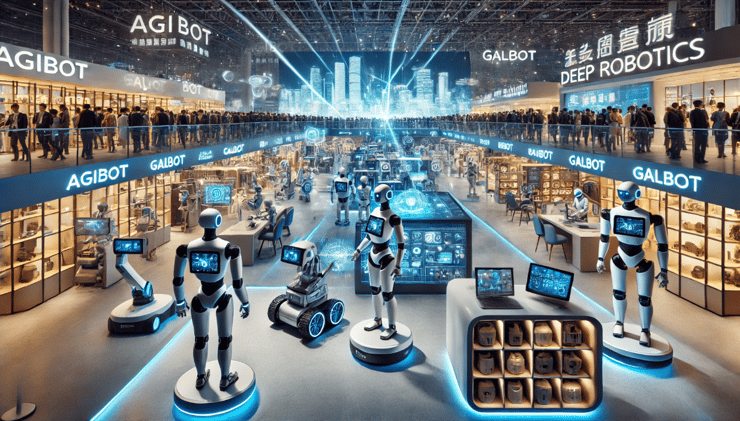At the 2024 World Robot Conference in Beijing, Chinese companies unveiled an impressive display of 27 humanoid robots, with Tesla’s Optimus as the only foreign entrant, highlighting China’s ambition to lead the global robotics industry.
A Diverse Display of Robotic Innovation
The five-day event, which concludes on Sunday, drew over 160 robotics firms from around the world, showcasing more than 60 new products, including 27 humanoid robots designed by Chinese companies. Despite not being recognized as global leaders in humanoid robotics, Chinese manufacturers are optimistic about repeating their successes in the smartphone and electric vehicle sectors.
AGIBOT and the Power of Large Language Models
One notable exhibitor, AGIBOT, founded by Huawei alumnus Li Zhihui, introduced robots powered by large language models (LLMs), capable of processing text, audio, and video for industrial and customer service applications. ‘LLMs have enabled a lot of new concepts and possibilities for robots,’ commented Hu Jingping, an AGIBOT representative.
AGIBOT showcased its robots designed for industrial applications, where they can efficiently handle tasks like automated stacking, loading, and unloading materials in factories. Additionally, these robots are equipped to interact with customers in retail environments, offering initial assistance before human staff take over, according to Hu.
Innovative Robotics from Astribot, Galbot, and Deep Robotics
Other standout entries included:
- Astribot’s S1 Robot Assistant: This robot demonstrated skills in calligraphy and playing the Chinese dulcimer.
- Galbot’s Wheeled Robots: These robots are capable of not only picking up and delivering customer orders but also efficiently organizing products on shelves for retail businesses.
- Deep Robotics’ Dr.01 Humanoid Robot: This robot is equipped with cutting-edge sensors and autonomous learning capabilities, marking the company’s first foray into humanoid robotics.
Overcoming Challenges in the Robotics Industry
Despite the impressive demonstrations, industry experts highlighted significant challenges, including:
- Technological Hurdles: Experts emphasized the need to overcome technological hurdles, which are currently limiting the development of humanoid robots.
- High Costs: Humanoid robots typically come with a hefty price tag, making them inaccessible to many families and businesses.
The Future of Humanoid Robots: Cost Barriers
Shao Hui, a manager at Juxie Intelligent, suggested that reducing prices to around 120,000 yuan (approximately $15,000) could make these robots more accessible to families. However, this is just one step towards making humanoid robots more affordable and widely available.
China’s Drive to Dominate Humanoid Robotics
While China may lag slightly behind the U.S. in AI, the country’s commitment to dominating the humanoid robotics field is evident. With 27 homegrown humanoid robots showcasing a wide range of capabilities at the event, the commercial availability of these robots may be closer than anticipated.
Conclusion
The 2024 World Robot Conference in Beijing has showcased China’s ambition to lead the global robotics industry. With numerous innovative robotic designs and large language models on display, it is clear that Chinese manufacturers are committed to dominating the humanoid robotics field. However, challenges such as technological hurdles and high costs need to be addressed to make these robots more accessible to families and businesses.






